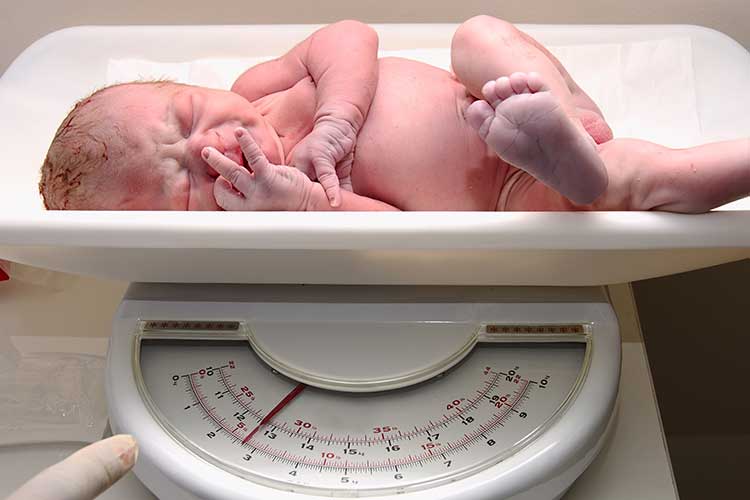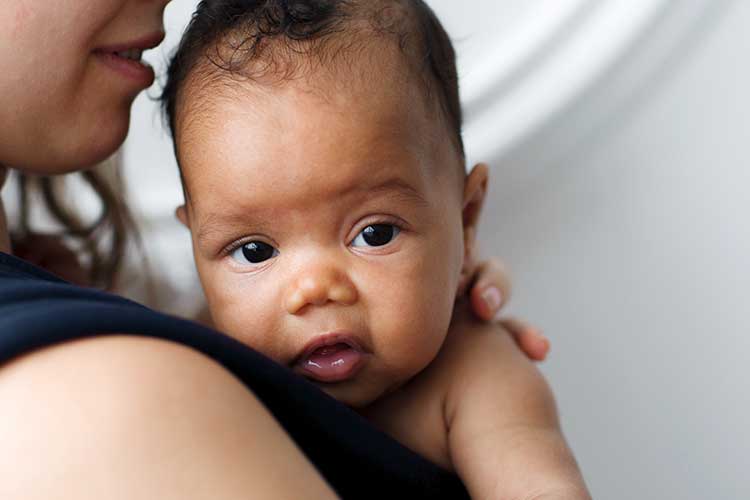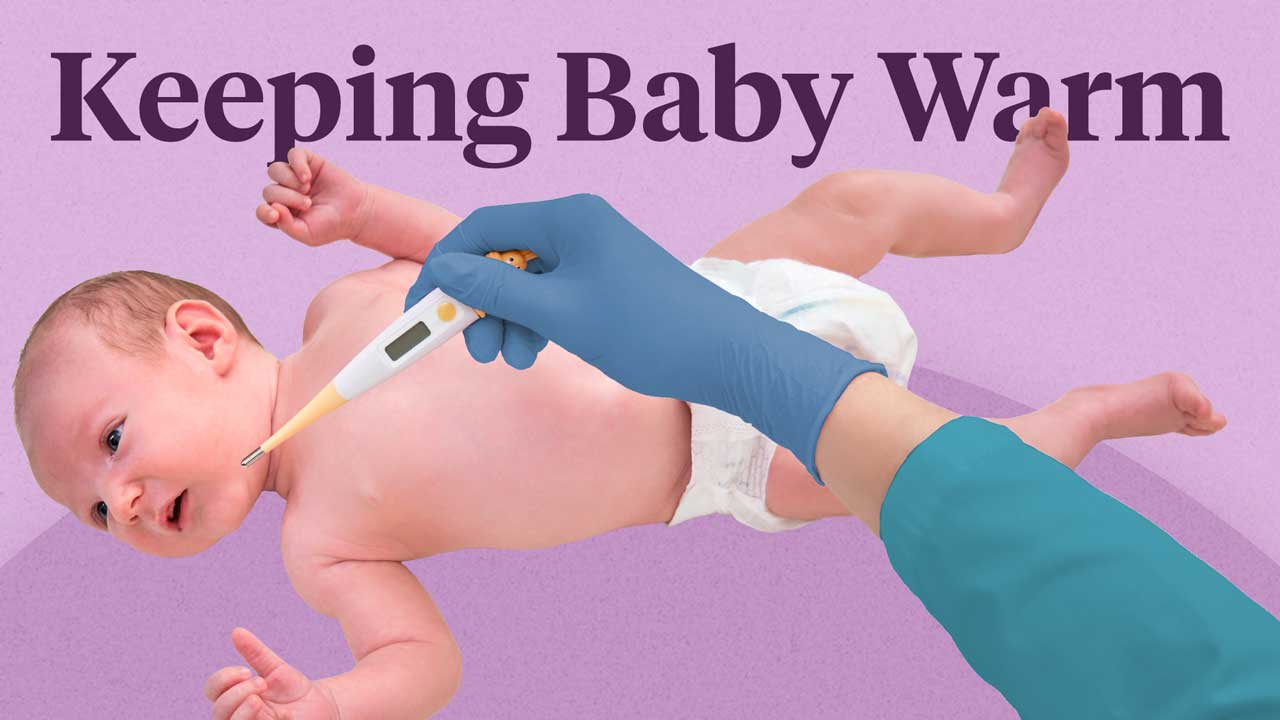Creating a thermoneutral environment is essential for the wellbeing of newborn babies, especially for those who are born prematurely or who need special or intensive care.
So, what is a thermoneutral environment, and how can it be created and maintained?
The Thermoneutral Environment
Thermoregulation is the ability to balance heat production and heat loss to maintain steady, normal body temperature, with a stable metabolic state where minimal rates of oxygen consumption or energy expenditure occur (RCHM 2020).
To put it more simply, a neutral thermal environment is the optimum environmental temperature to ensure an infant has the lowest oxygen and energy expenditure whilst maintaining a normal body temperature. Each infant has their own neutral thermal environment depending on their birth weight, gestation and whether or not they are clothed (North Devon Healthcare NHS Trust 2018).
An ideal thermoneutral environment is achieved when infants can maintain their core body temperature at rest between 36.5 ℃ and 37.5 ℃ (RCHM 2020). Too much heat, or too little, can result in thermal stress in the form of hyperthermia, or more commonly, hypothermia or excessive heat loss (CHW 2021).
Without the ability to maintain a steady body temperature, cold stress and hypothermia can occur, leading to serious metabolic problems and the potential risk of morbidity or mortality (CHW 2021)
Some of the reasons why babies are prone to poor thermoregulation at birth include:
- Transition from a constant intrauterine temperature to a variable external temperature
- A relatively high metabolic rate
- Large surface to body mass ratio
- A large head relative to the body, accounting for up to 25% heat loss
- Lack of subcutaneous fat, resulting in poor insulation
- Permeable skin, especially with prematurity
- Immature hypothalamus, central nervous system and vasomotor control
- Inability to conserve heat through shivering
- Reduced energy stores
- Poor muscle tone and inability to change body position
- Inefficient sweat glands.
(Morrin et al. 2017)
Measuring Body Temperature

Axillary temperature measurement is usually recommended for full-term newborn infants (North Devon Healthcare NHS Trust 2018).
The standard range of body temperatures for a healthy term newborn is:
| < 32.0 ºC | Severe hypothermia |
| 32.0 - 35.9 ºC | Moderate hypothermia |
| 36.0 - 36.4 ºC | Mild hypothermia |
| 36.5 - 37.5 ºC | Normal range |
| > 37.5 ºC | Hyperthermia |
(Adapted from SLHD 2022)
Methods of Heat Loss
Hypothermia or cold stress is known to occur via four principal methods:
- Conduction: Heat loss occurs through direct contact with a cold surface, such as weighing scales or a cold mattress, allowing warmth to pass from the infant to the cooler surface.
- Convection: Heat loss occurs as cooler air circulates around the relatively warm skin of the infant, especially if the skin is uncovered. For example, the presence of draughts, a cool room or open incubator ports can all cause convective heat loss.
- Radiation: Radiant heat loss occurs when heat is transferred from the exposed surface of the infant to the cooler surrounding surfaces. Radiation can account for up to 60% of heat loss as warmth radiates towards a cooler surface, such as a cold window or incubator wall.
- Evaporation: Insensible water loss from the respiratory mucosa and skin surface, especially wet skin, is known to account for up to 60% of heat loss in the preterm infant.
(Morrin et al. 2017)

Heat Loss and Hypothermia
It’s well known that hypothermia has a direct relationship with increased mortality and morbidity, with a 28% increase in mortality for each 1 ºC drop in temperature. Rapid heat loss of up to 1ºC per minute can occur in infants nursed in an inappropriate environment, highlighting the importance of accurate temperature measurement (Morrin et al. 2017).
In particular, excessive heat loss can lead to acidosis due to the metabolism of fatty acids, as well as increased oxygen consumption leading to episodes of hypoxia. Other complications caused by hypothermia include increased glucose uptake, which may result in hypoglycaemia as well as postnatal weight loss or failure to gain weight (Morrin et al. 2017).
An ideal thermoneutral environment is achieved when infants can maintain a core temperature at rest of between 36.5 ºC and 37.5 ºC, but for certain infants, this may require extra monitoring and interventions. Those most at risk include infants:
- At a low gestational age
- At an extremely low birth weight
- With cardio-respiratory, neurological and endocrine disease
- With congenital abnormalities such as gastroschisis or exomphalos
- With hypoglycaemia
- Who were delivered through caesarean birth (immediately post-delivery).
(Morrin et al. 2017)
Brown Adipose Tissue and Non-Shivering Thermogenesis
Brown adipose tissue is mainly found in nuchal subcutaneous tissue around the kidneys, the mediastinum and interscapular regions (RCHM 2020).
When their temperature falls below 36.5 °C, newborn infants peripherally vasoconstrict and initiate a non-shivering thermogenesis of brown adipose tissue (RCHM 2020). However, as brown fat only starts to form from 26 weeks gestation and development stops post-delivery, it can leave many preterm babies at greater risk of cold stress. With continued hypothermia, stores of brown fat can become depleted, resulting in hypoxia and hypoglycaemia (Waldron & MacKinnon 2007).
Premature and Growth-Restricted Infants are at High Risk
Premature infants and those suffering intrauterine growth restriction are particularly at risk of hypothermia as they have less brown fat stores, decreased fat for insulation, decreased glycogen stores, immature skin that increases water loss, poor vascular control, a slower metabolism and a narrower range of thermal control (RCHM 2020).
Some of the signs that a preterm infant is having difficulty keeping warm include:
- Shallow breathing or apnoea
- Decreased activity and apparent lethargy
- Bradycardia or tachycardia
- Hypotonia with diminished reflexes
- Pale mottled skin that is cool to touch, especially at the extremities
- Weak suck and poor feeding ability
- Respiratory distress and tachypnoea.
(North Devon Healthcare NHS Trust 2018)
Conclusion

Temperature monitoring in the newborn is a well-researched and standard procedure for all infants in the first few days of life. For premature babies or those born with growth restriction, it becomes even more important as the risk of hypothermia and cold stress is increased.
Yet, with care and interventions to prevent heat loss, such as skin-to-skin contact, coverings such as wraps and hats, or incubator care for those who need it, the thermoneutral environment can easily be maintained.
Topics
References
- The Children’s Hospital at Westmead 2021, Thermoregulation in Neonatal Care - CHW Practice Guideline, New South Wales Government, viewed 19 September 2023, https://resources.schn.health.nsw.gov.au/policies/policies/pdf/2007-0006.pdf
- Morrin, E et al. 2017, Nursing Guidelines on the Care of Infants With Thermoregulation Instability, 3rd edn, Our Lady’s Children’s Hospital, viewed 20 September 2023, https://media.childrenshealthireland.ie/documents/Thermoregulation-2017.pdf
- North Devon Healthcare NHS Trust 2018, Thermal Care of the Neonate, National Health Service, viewed 19 September 2023, https://www.northdevonhealth.nhs.uk/wp-content/uploads/2016/07/Thermal-care-of-the-Neonate-v2-2018.pdf
- The Royal Children's Hospital Melbourne 2020, Assisted Thermoregulation, RCHM, viewed 19 September 2023, https://www.rch.org.au/rchcpg/hospital_clinical_guideline_index/Thermoregulation_in_the_preterm_infant/
- Sydney Local Health District 2022, Women and Babies: Thermoregulation in Neonates, New South Wales Government, viewed 20 September 2023, https://www.slhd.nsw.gov.au/RPA/neonatal%5Ccontent/pdf/guidelines/Thermoregulation_Neonates_RPAH_GL2022_039.pdf
- Waldron, S & MacKinnon, R 2007, ‘Neonatal Thermoregulation', Infant, vol. 3 no. 3, viewed 20 September 2023, http://www.infantjournal.co.uk/pdf/inf_015_nor.pdf
 New
New 
